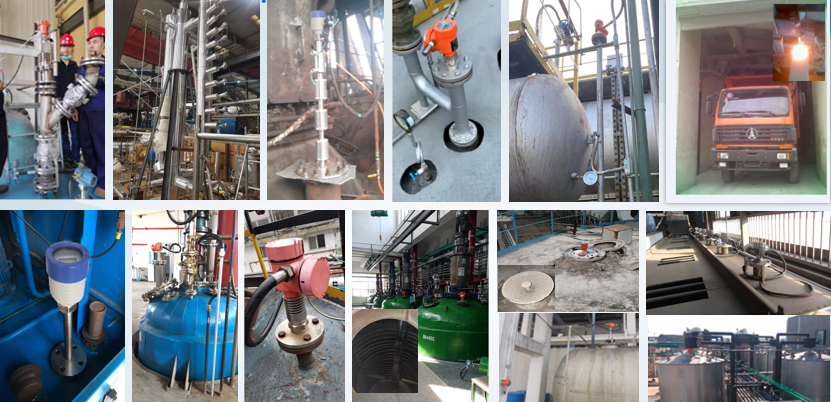Level meters are critical instruments for measuring liquid or solid material levels in tanks, vessels, and open channels, ensuring operational efficiency, safety, and compliance across industries. Their applications vary widely based on regional industrial needs, environmental regulations, and technological preferences. Below are compelling case studies from around the world, showcasing how level meters address unique challenges in different sectors and geographies.
1. Oil and Gas in the United States: Radar Level Meters in Shale Oil Storage
In the Permian Basin, Texas—the heart of U.S. shale oil production—energy companies like ExxonMobil use guided wave radar (GWR) level meters (e.g., Emerson’s Rosemount 5900S) to monitor crude oil storage in aboveground tanks. These meters excel in high-temperature (up to 200°C) and volatile environments, providing precise measurements despite vapor layers and foam. A 2022 case study showed that GWR reduced measurement errors from 5% (with traditional float gauges) to ≤0.1%, enabling more accurate inventory management and minimizing overfilling risks during railcar loading.
2. Chemical Industry in Germany: Magnetostrictive Level Meters for Hazardous Liquids
German chemical giant BASF relies on magnetostrictive level meters (e.g., Endress+Hauser’s ProLine M) in its Ludwigshafen plant to measure aggressive fluids like sulfuric acid and methanol. These meters, with corrosion-resistant Hastelloy probes and ATEX-certified designs, ensure safety in explosive atmospheres. In 2021, BASF upgraded 300 tanks to magnetostrictive technology, achieving real-time 液位 (liquid level) data with ±1 mm accuracy, which streamlined batch processing and reduced manual sampling by 80%, aligning with Germany’s Industry 4.0 initiatives.
3. Water Treatment in Japan: Ultrasonic Level Meters for Smart Cities
Tokyo’s water utilities face strict regulations for leak detection and reservoir management. The Tokyo Waterworks Bureau employs ultrasonic level meters (e.g., OMRON’s HYDAC EDS 3446) in underground stormwater tanks and elevated reservoirs. These non-contact sensors, resistant to humidity and dust, monitor water levels with ±2 mm precision, feeding data into Tokyo’s IoT-enabled smart grid. During the 2023 Typhoon Khanun, ultrasonic meters helped reroute stormwater flows in real time, preventing flooding in 17 vulnerable districts and reducing response time by 50%.
4. Mining in Australia: Submersible Pressure Level Meters for Slurry Ponds
In Western Australia’s iron ore mines, BHP uses submersible pressure level meters (e.g., VEGA’s PL69) to measure slurry levels in tailings ponds—a critical task in managing mining waste. These rugged sensors, rated for depths up to 100 meters and resistant to abrasion from iron ore particles, provide reliable data despite high solids content (up to 40% by weight). A 2020 upgrade to VEGA meters reduced false alarms from sediment buildup by 65%, optimizing pump efficiency and minimizing environmental discharge risks.
5. Food and Beverage in Brazil: Hygienic Magneto-Float Level Meters
Brasil Foods, one of Latin America’s largest food processors, uses hygienic magneto-float level meters (e.g., VEGAPULS 69) in its juice and dairy production lines. These FDA-compliant meters, with smooth PTFE coatings and crevice-free designs, prevent bacterial growth in tanks storing milk or fruit pulp. In 2022, the company replaced traditional sight glasses with magneto-float technology, achieving ±2 mm accuracy and reducing cleaning time by 30% during daily sanitization cycles, crucial for meeting Brazil’s strict ANVISA food safety standards.
6. Pharmaceutical Industry in India: Guided Wave Radar for Sterile Environments
Dr. Reddy’s Laboratories, a leading Indian pharmaceutical company, employs guided wave radar level meters (e.g., Yokogawa’s EY series) in sterile fermentation tanks producing antibiotics. These meters, with electro-polished stainless steel probes and 3-A Sanitary certification, withstand frequent autoclaving (134°C, 3 bar) while measuring viscous fluids like penicillin broth. In 2021, the system reduced batch contamination incidents by 90% by eliminating mechanical moving parts, a critical improvement for meeting WHO Good Manufacturing Practice (GMP) guidelines.
7. Renewable Energy in Norway: Laser Level Meters for Hydroelectric Reservoirs
Statkraft, Europe’s largest renewable energy company, uses laser level meters (e.g., SICK’s LMS511) to monitor water levels in Norway’s mountain reservoirs. These non-contact sensors, operating in subzero temperatures (-30°C), measure distances up to 500 meters with ±5 mm accuracy, even through snow and fog. During the 2022 energy crisis, real-time laser data helped Statkraft optimize hydropower generation by 8%, balancing grid demand while preserving ecological flow rates for salmon habitats.
Conclusion: Adaptability and Innovation Across Borders
These global case studies illustrate how level meters are tailored to regional challenges: rugged designs for Australia’s mining harshness, hygienic standards for Brazil’s food industry, and smart IoT integration for Japan’s urban infrastructure. As industries worldwide adopt digital transformation and stricter environmental norms, advanced level measurement technologies—such as AI-powered predictive diagnostics and wireless connectivity—will play an increasingly vital role in ensuring safety, efficiency, and sustainability across continents.

Post time: Apr-25-2025

